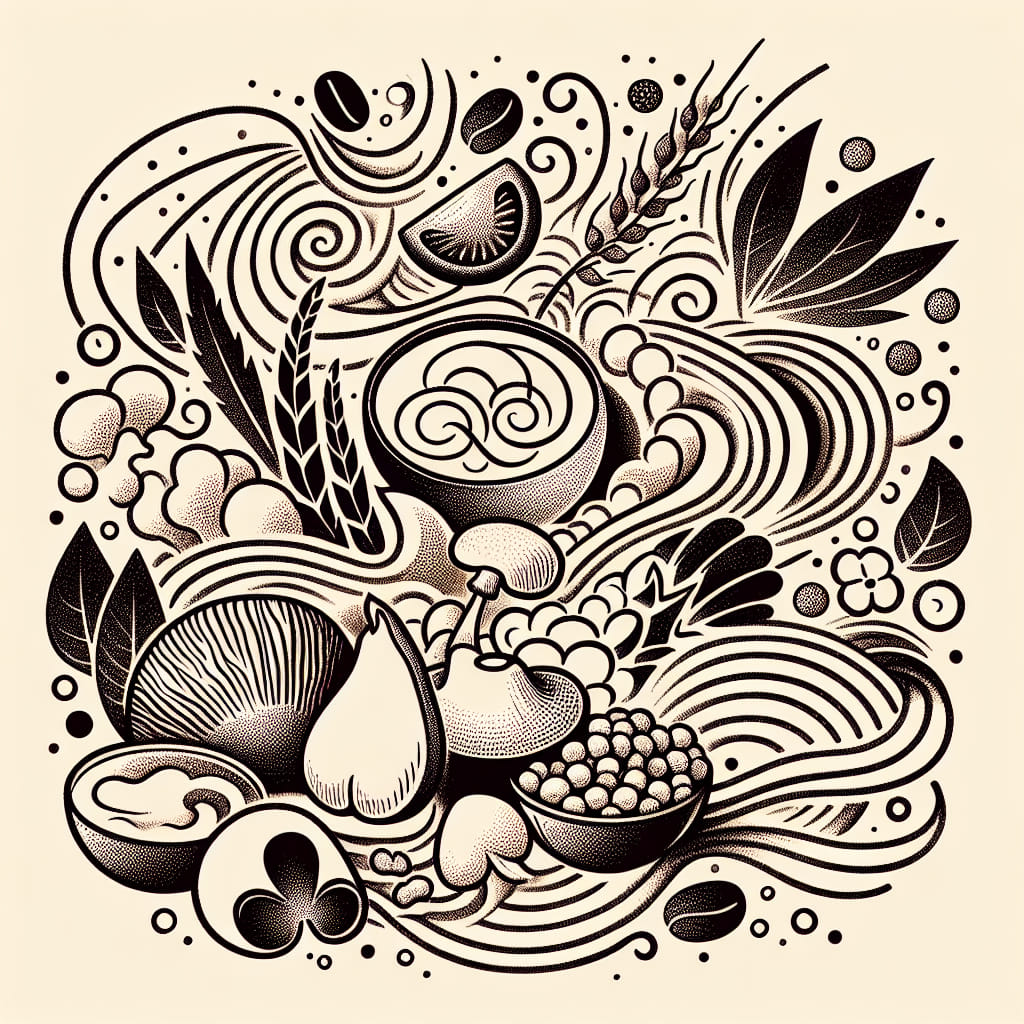· word of the day · 4 min read
Umami: Unlocking Japanese Culinary Secrets in Language Learning
Discover the essence of Japanese cuisine with the word Umami, a savory taste that enriches your language learning and cultural experience.

Exploring Unusual Japanese Words: A Deeper Dive into Language and Culture
Learning a new language is an exciting journey filled with discovery. Each word you learn opens up a new window into the culture, history, and everyday life of the people who speak that language. Japanese, with its rich tapestry of vocabulary, offers countless opportunities for such discoveries. Today, we’re going to explore an intriguing word related to cooking and recipes that not only enhances your vocabulary but also provides a glimpse into Japanese culinary culture.
The Word: “Umami” (うま味)
Pronunciation: oo-MAH-mee
Meaning: Umami is often described as the fifth taste, alongside sweet, sour, salty, and bitter. It translates to “pleasant savory taste” and is a fundamental component of Japanese cuisine.
Cultural Significance of Umami
Umami is a concept that has been integral to Japanese cooking for centuries, even before it was scientifically recognized. The term was coined by Kikunae Ikeda, a Japanese chemist, in 1908. He identified that the savory taste in foods like seaweed, fish, and soy sauce was due to the presence of glutamate, an amino acid.
In Japanese culture, umami is not just a taste but an experience. It is the essence that brings depth and richness to a dish, making it more satisfying and enjoyable. The appreciation of umami goes beyond just eating; it’s about savoring and experiencing food in a profound way.
Examples of Umami in Japanese Cuisine
- Dashi (だし): A fundamental broth made from kombu (kelp) and katsuobushi (dried bonito flakes). Dashi is the backbone of many Japanese soups, sauces, and dishes, providing a deep umami flavor.
- Soy Sauce (醤油, Shoyu): A staple in Japanese cooking, soy sauce is rich in umami. It’s used in marinades, dipping sauces, and as a seasoning for a variety of dishes.
- Miso (味噌): Fermented soybean paste used in soups, dressings, and marinades. Miso adds a complex umami flavor to any dish it touches.
- Natto (納豆): Fermented soybeans known for their strong flavor and sticky texture. Natto is an acquired taste but is packed with umami.
Idiomatic Expressions and Sayings
While “umami” itself isn’t commonly used in idiomatic expressions, the concept of savoring and enjoying food is deeply embedded in Japanese culture. Phrases like “itadakimasu” (いただきます), said before a meal, reflect the cultural appreciation for food and the effort put into preparing it.
Umami in Literature and Folklore
In Japanese literature and folklore, food often plays a central role, symbolizing comfort, community, and tradition. The concept of umami, while not always explicitly mentioned, is inherent in the detailed descriptions of meals and the enjoyment of food. For example, in the classic Japanese novel “The Tale of Genji,” there are numerous references to elaborate feasts and the pleasure derived from them, highlighting the cultural importance of taste and flavor.
Enriching Your Language Learning
Learning words like “umami” does more than just expand your vocabulary; it enriches your understanding of Japanese culture and culinary traditions. It allows you to appreciate the nuances of the language and the deep connection between food and cultural identity. By exploring such words, you gain a more holistic understanding of the language and the people who speak it.
If you’re eager to dive deeper into the Japanese language and discover more fascinating words and concepts, consider using tools like Glosa to enhance your learning experience.
Conclusion
The journey of learning a new language is filled with moments of discovery and insight. Words like “umami” offer a unique glimpse into Japanese culture, revealing the importance of flavor and the art of savoring food. By embracing these words, you not only enhance your language skills but also deepen your appreciation for the rich cultural heritage that comes with it. So next time you enjoy a savory dish, take a moment to savor the umami and reflect on the beautiful complexity of the Japanese language.
Happy learning, and いただきます (itadakimasu)!
Download Glosa to continue your journey into the Japanese language.




